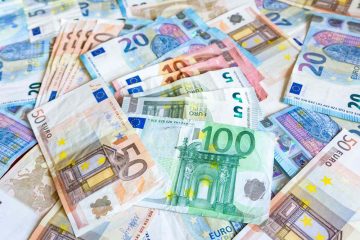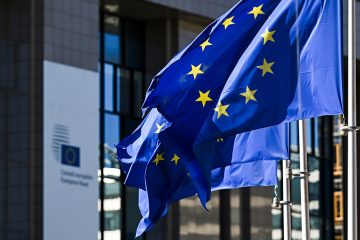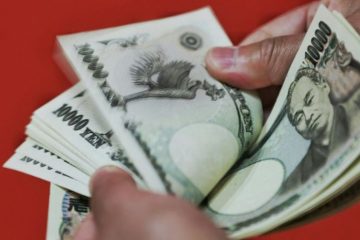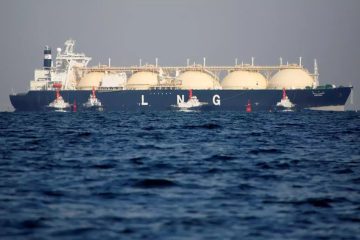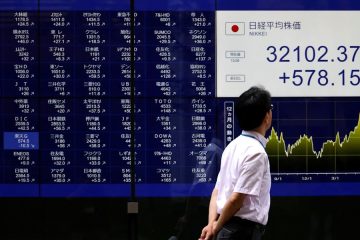| Symbol | Last | Change | % | High | Low |
|---|---|---|---|---|---|
| EUR / NOK | 11.884 | +0.078 | +0.65% | 0.000 | 0.000 |
| Close | GMT Time : Sat Dec 13 2025 03:54 | ||||
EUR/NOK : Intraday Live Chart
EUR/NOK : Technical Signal Buy & Sell
| 5 Min Signal | 1 Hour Signal | 1 Day Signal |
|---|---|---|
| Sell | Buy | Buy |
EUR/NOK : Moving Averages
| Period | MA 20 | MA 50 | MA 100 |
|---|---|---|---|
| 5 Minutes | 11.89 | 11.89 | 11.89 |
| 1 Hour | 11.86 | 11.83 | 11.81 |
| 1 Day | 11.77 | 11.72 | 11.69 |
| 1 Week | 11.74 | 11.70 | 11.65 |
EUR/NOK : Technical Resistance Level
| Resistance 1 - R1 | Resistance 2 - R2 | Resistance 3 - r3 |
|---|---|---|
| 0.000 | 0.000 | 0.000 |
EUR/NOK : Technical Support Level
| Support 1 - S1 | Support 2 - S2 | Support 3 - S3 |
|---|---|---|
| 0.000 | 0.000 | 0.000 |
EUR/NOK : Periodical High, Low & Average
| Period | High Change from Last | Low Change from Last | Average Change from Last |
|---|---|---|---|
| 1 Week | 11.819 +0.064 | 0.000 +11.884 | 11.794 +0.090 |
| 1 Month | 11.837 +0.047 | 0.000 +11.884 | 11.756 +0.128 |
| 3 Month | 11.837 +0.047 | 0.000 +11.884 | 11.694 +0.190 |
| 6 Month | 11.980 -0.096 | 0.000 +11.884 | 11.675 +0.209 |
| 1 Year | 12.138 -0.254 | 0.000 +11.884 | 11.641 +0.243 |
EUR/NOK : Historical Chart
EUR to NOK Exchange Rate History: Oil, Eurozone Instability, and Policy Divergence
The EUR to NOK exchange rate reflects the complex interplay between a major global currency (euro) and a resource-backed, fiscally disciplined economy (Norway). As a non-EU but EEA member, Norway operates independently of the ECB and eurozone monetary policy, with its central bank—Norges Bank—playing a key role in anchoring the krone. At the same time, global oil price cycles and risk sentiment have had a major influence on the pair.
1999–2002: Euro Debut and Krone Strength
When the euro was introduced in 1999, the EUR/NOK pair hovered around 8.20, as Norway’s krone was seen as relatively strong, backed by fiscal surpluses and stable monetary policy. Meanwhile, the euro struggled with skepticism about the newly formed currency union, keeping EUR under pressure.
By 2002, EUR/NOK declined to around 7.30, reflecting krone appreciation, driven by Norway’s solid growth, low inflation, and rising oil prices.
2003–2008: Oil Boom and Krone Gains
This era saw strong oil prices and robust Norwegian economic fundamentals. From 2003 to 2008, the krone continued appreciating, and EUR/NOK fell further, reaching a low of 7.20 in early 2008.
Norway’s sovereign wealth fund and tight monetary policy stood in contrast to eurozone monetary accommodation, helping the krone outperform.
2009–2012: Global Crisis and Eurozone Debt Fears
The 2008 financial crisis marked a sharp reversal. As risk aversion spiked, the krone weakened, and EUR/NOK spiked to over 9.80 in late 2008, with investors fleeing to safe-haven assets like the USD and CHF.
Although Norway remained relatively insulated, the Eurozone debt crisis (2010–2012) also impacted NOK sentiment. Still, EUR/NOK stayed volatile, fluctuating between 7.80 and 8.90 during this period.
2013–2019: Oil Price Collapse and Monetary Divergence
The 2014–2015 oil price collapse hurt Norway’s exports and fiscal balance, weakening the krone. The EUR/NOK rate jumped from 8.00 to over 9.80 between 2014 and 2015. Despite this, Norway’s strong institutions helped limit long-term damage.
Meanwhile, the ECB launched QE and negative rates, while Norges Bank was more conservative, leading to a moderate upward trend in EUR/NOK. From 2016 to 2019, the pair mostly stayed in the 9.50–10.20 range.
2020–2024: Pandemic, Inflation, and Energy Realignment
The COVID-19 pandemic triggered another spike in EUR/NOK, reaching 12.00 in March 2020 as oil prices crashed and market panic intensified. However, the krone rebounded sharply as oil prices recovered and Norges Bank resumed hikes by late 2021.
The energy crisis in 2022—triggered by the Russia-Ukraine war—was favorable for Norway, boosting gas revenues and strengthening the krone. But as global recession fears loomed and EUR rates rose faster than NOK, the EUR/NOK pair rebounded to 11.50 by early 2023.
As of April 2025, the EUR/NOK exchange rate sits around 11.30, reflecting a balance between high European inflation and Norway’s cautious rate hikes. Oil remains the defining driver, along with Norges Bank’s hawkish stance to curb imported inflation.
✅ Key:
🟢 = NOK appreciated vs euro
❌ = NOK depreciated vs euro
⚠️ = Mixed or range-bound trend
📊 EUR to NOK Exchange Rate by Decade
| Decade | Avg. EUR/NOK Rate (Approx) | Change vs. Previous Decade | Key Events |
|---|---|---|---|
| 1999–2002 | 8.20 → 7.30 | 🟢 -11% NOK appreciation | Euro launch, NOK strength, oil revenues |
| 2003–2008 | 7.30 → 7.20 | ⚠️ -1% marginal change | Oil boom, Norwegian fiscal discipline |
| 2009–2012 | 7.20 → 8.90 | ❌ +24% NOK depreciation | Financial crisis, eurozone turmoil |
| 2013–2019 | 8.90 → 10.20 | ❌ +15% NOK depreciation | Oil crash, ECB QE, low-rate divergence |
| 2020–2024 | 10.20 → 11.30 | ❌ +11% NOK depreciation | COVID-19, energy crisis, Norges Bank vs ECB divergence |
The EUR/NOK pair continues to be shaped by oil cycles, monetary policy divergence, and regional geopolitical risks. With Europe tightening monetary policy while Norway remains cautious, and energy exports booming, the krone may regain ground—especially if global risk appetite improves.
EUR/NOK - Euro / Norwegian Krone Currency Rate
Live Price of EUR/NOK. EUR/NOK Live Chart, Intraday & Historical Live Chart, Buy Sell Signal, EUR/NOK News, EUR/NOK Averages, Returns & Historical Data
» EUR/NOK
» EUR/NOK Real Time Quotes
» EUR/NOK Live Chart
» EUR/NOK Intraday Chart
» EUR/NOK Historical Chart
» EUR/NOK Buy Sell Signal
» EUR/NOK News
» EUR/NOK Videos
» EUR/NOK Averages
» EUR/NOK Currency Pair
» EUR/NOK Historical Data

